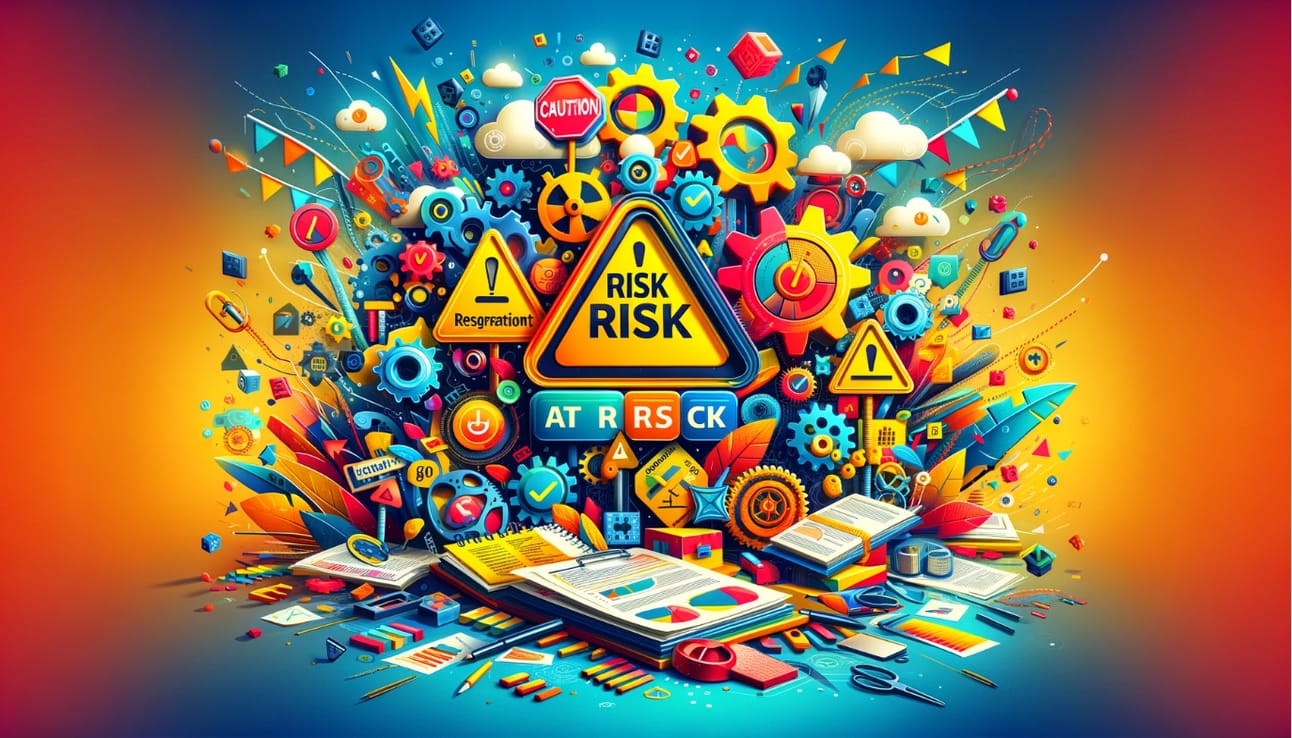
Credits: DALL-E
Table of Contents
Is Risk Management at “Risk”?
Risk Management has become a very “risky” business. It is more of a hype than a serious endevor that is leveraged to make a process more robust. Typically more hours have been spent talking and writing about risks than doing something meaningful with it. In my opinion, more often than not risk assessments are just a paper exercise that is done to place a “checkmark” in order to keep QA happy.
The question is why is the state of risk management at the brink of absolute failure? Risk Management is not thoroughly understood and very rarely it is incorporated into the life cycle to make the design robust and validation testing more thorough. More importantly there are not good tools that enable teams to create and manage risks at ease while providing the dashboards and KPIs at their fingertips.
"at some point, safety is just pure waste" was the famous proclamation of Stockton Rush, the then CEO of OceanGate.
Rush's approach often involved bypassing standard industry practices and regulations. For instance, he admitted to "breaking some rules" in the construction of the Titan submersible. We all know that five people including Stockton Rush died in the implosion of the Titan submersible.
Introducing ContinuousRM, a comprehensive process that entails ongoing identification, assessment, and mitigation of risks. ContinuousRM lets organizations proactively identify and manage risks.
Key Features: ContinuousRM
ContinuousRM can effectively manage risks by leveraging the following features:
Manage risk in customizable risk table view.
Manage risk in any project.
Custom risk models (Matrices and RPN Scores).
Identify, mitigate, verify and trace risks.
Report your risks.
Importance of Risk Management in Lifesciences
ContinuousRM plays a crucial role in the life sciences industry due to the unique nature of the products and processes involved. Here are some key reasons why ContinuousRM is important in life sciences:
Regulatory Compliance
Life sciences companies operate in a heavily regulated environment with stringent quality and safety standards. Implementing robust ContinuousRM practices helps organizations comply with regulations such as Good Manufacturing Practices (GMP), Good Laboratory Practices (GLP), and Good Clinical Practices (GCP).
Business Continuity
Effective ContinuousRM helps life sciences companies anticipate and mitigate potential disruptions to operations. By identifying and mitigating risks, organizations can maintain continuity in manufacturing and supply processes.
Facilitating Audits and Inspections
Effective Risk Management simplifies the process of audits and inspections by providing a centralized repository for all critical documents, enabling quick retrieval, review, and verification of compliance status.
Product Quality
Maintaining product quality is essential to the reputation and success of life sciences companies. By proactively identifying and addressing risks throughout the product lifecycle, organizations can minimize deviations, defects, and product recalls, ensuring consistent quality and efficacy.
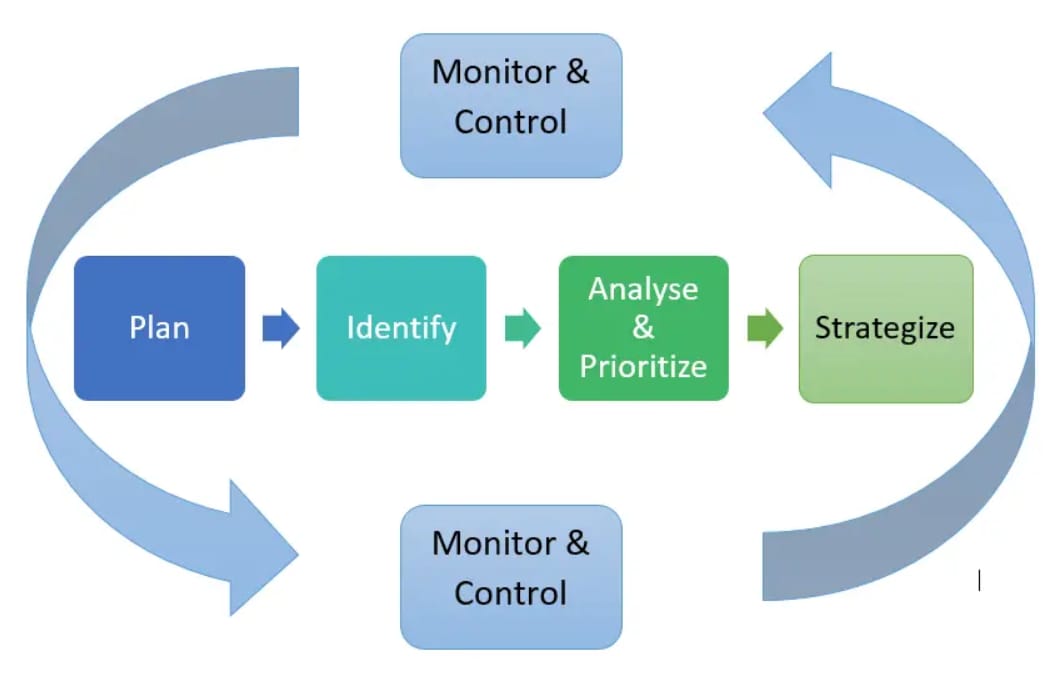
Risk Management Process
Key Highlighting Features
Custom Risk Models
ContinuousRM's Risk Matrix feature offers organizations unparalleled flexibility in identifying, assessing, and managing risks. Customizable parameters, including risk levels and scoring mechanisms, align with specific organizational needs, reflecting unique risk appetites and strategic objectives.
Through intuitive visualizations, the Risk Matrix transforms complex data into easily understandable representations, facilitating communication and collaboration among stakeholders. It automatically calculates risk scores and assigns appropriate risk levels, aiding in informed decision-making and prioritizing mitigation efforts.
In essence, it's a dynamic framework empowering proactive risk management strategies, enabling organizations to navigate uncertainties with confidence and clarity.
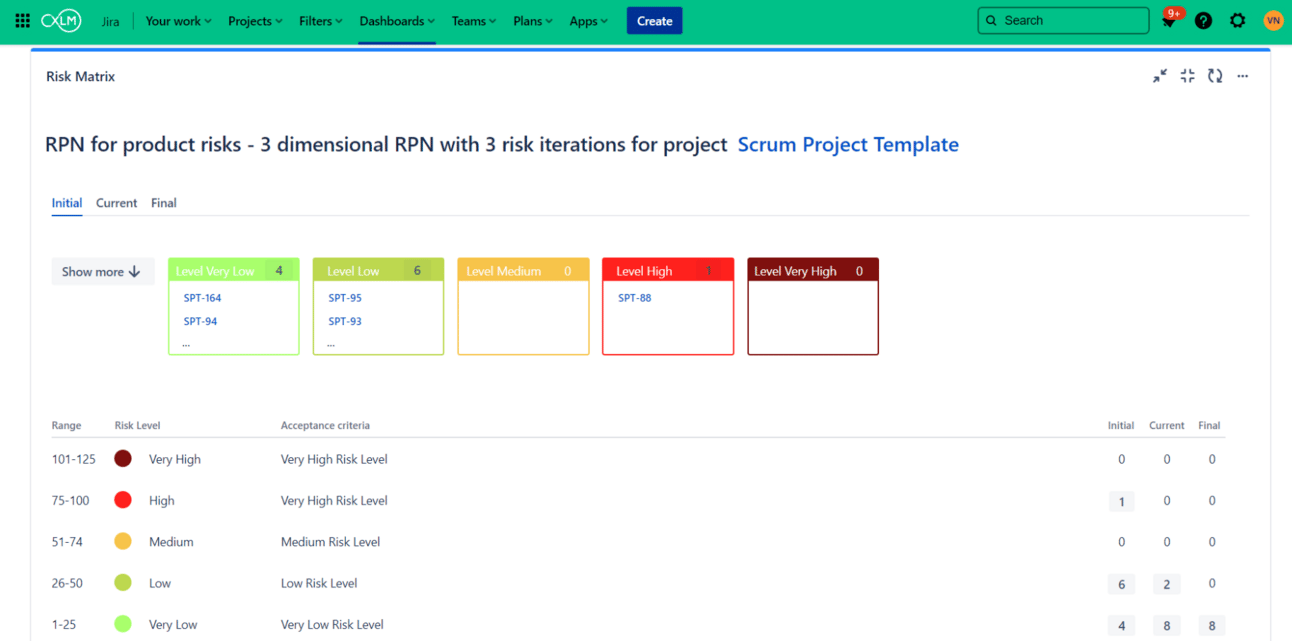
Risk Matrix
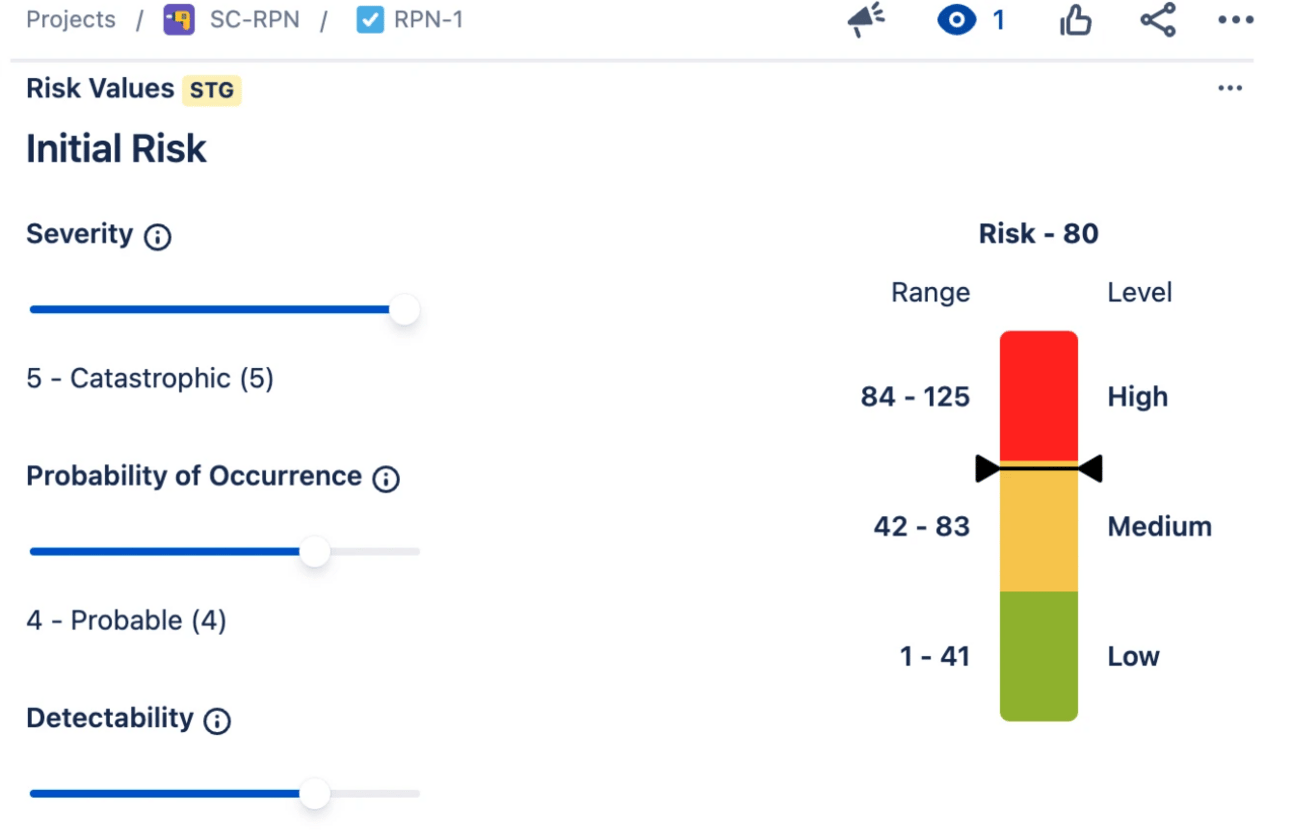
Calculating Risk Values
Identify, Mitigate, Verify and Trace Risks
To uphold robust Risk Management practices and adhere to industry standards such as ISO 14971, it's essential to methodically identify, mitigate, verify, and track risks throughout the project lifecycle. Here's how the user can follow these steps within the framework of ContinuousRM:
Identification of Risks
The process commences with project initiation, configuring the Risk Model to delineate risk parameters, and leveraging the Risk Management table for streamlined risk assessment.
By systematically identifying risks at the outset, teams establish a solid foundation for proactive risk mitigation and compliance with industry standards.
Mitigation of Risks
ContinuousRM emphasizes traceability and efficacy in risk mitigation. This involves dynamic management within the Risk Management table, enabling users to add, remove, and link risks for comprehensive traceability.
Assigning Severity and Probability values automates risk scoring, facilitating prioritization. Integration with mitigation actions enables direct association with identified risks, fostering proactive risk management and response strategies.
Verification of Mitigation Actions
The validation of mitigation actions is crucial to ensuring the effectiveness of risk mitigation efforts. By conducting manual verifications within the ContinuousRM platform, users can carefully oversee and track the progress of these efforts.
Linking verifications to specific risk mitigation measures helps ensure seamless tracking and traceability, thereby enhancing accountability and clarity in risk management activities. Real-time monitoring of verification action status allows for timely assessment, guaranteeing diligent implementation of risk mitigation measures and meticulous risk management.
Risk Traceability
Comprehensive traceability is vital for effective risk management. Integrating risks with mitigation actions, requirements, tests, and other pertinent issues fosters a holistic understanding of risk impact across project phases.
Utilizing visualization tools such as the Risk Matrix, Risk Table, Risk History, and Risk Traceability Reports provides stakeholders with clear insights into risk evolution and mitigation progress. Accessing pre-defined Risk Management Report templates streamlines documentation and reporting, ensuring comprehensive coverage of risk-related information for informed decision-making and project success.
In essence, by diligently following these steps within the ContinuousRM framework, organizations can proactively identify, mitigate, verify, and track risks, thereby fostering compliance with industry standards and ensuring project success.

Calculating Risk Values
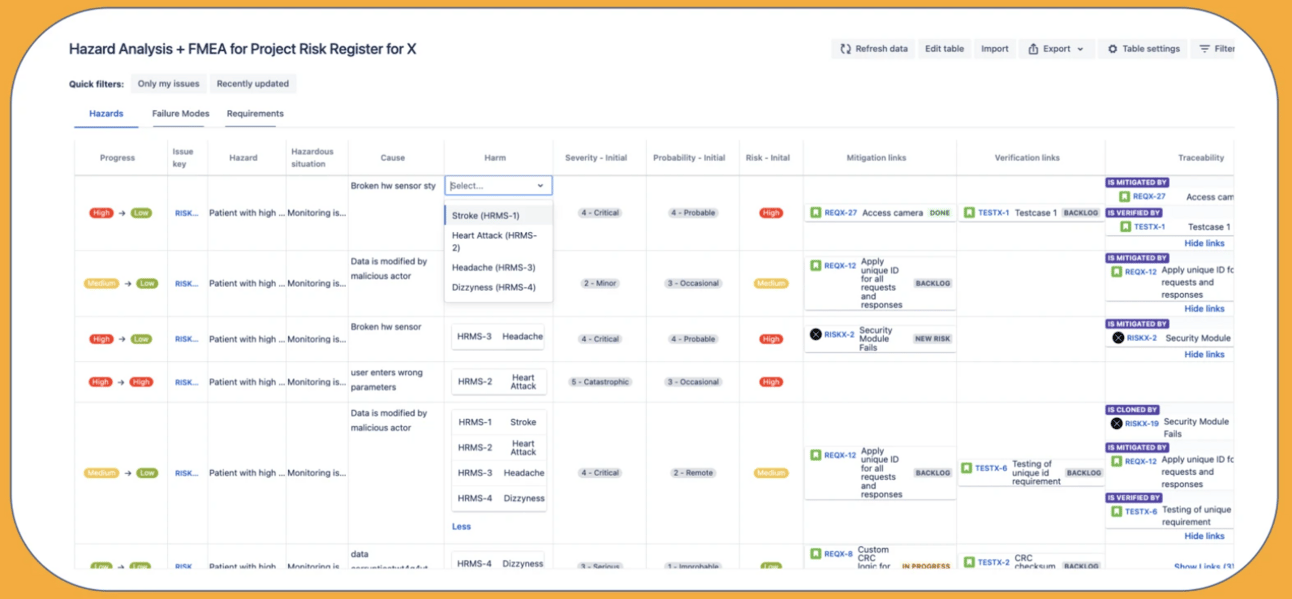
Generating Traceability
Risk Table
The Risk Tables feature in ContinuousRM offers organizations a user-friendly and highly customizable approach to risk management. Its familiar spreadsheet-style interface allows for efficient visualization and management of risks within projects, with the ability to create multiple sheets for different types of risks.
Customization options empower users to tailor Risk Tables to their specific needs, ensuring alignment with organizational risk management practices and preferences. Integration with various Risk Models facilitates comprehensive risk assessment and mitigation strategies. Overall, Risk Tables provide a powerful toolset for organizations to efficiently manage risks, ensuring proactive identification, assessment, and mitigation to achieve project objectives.
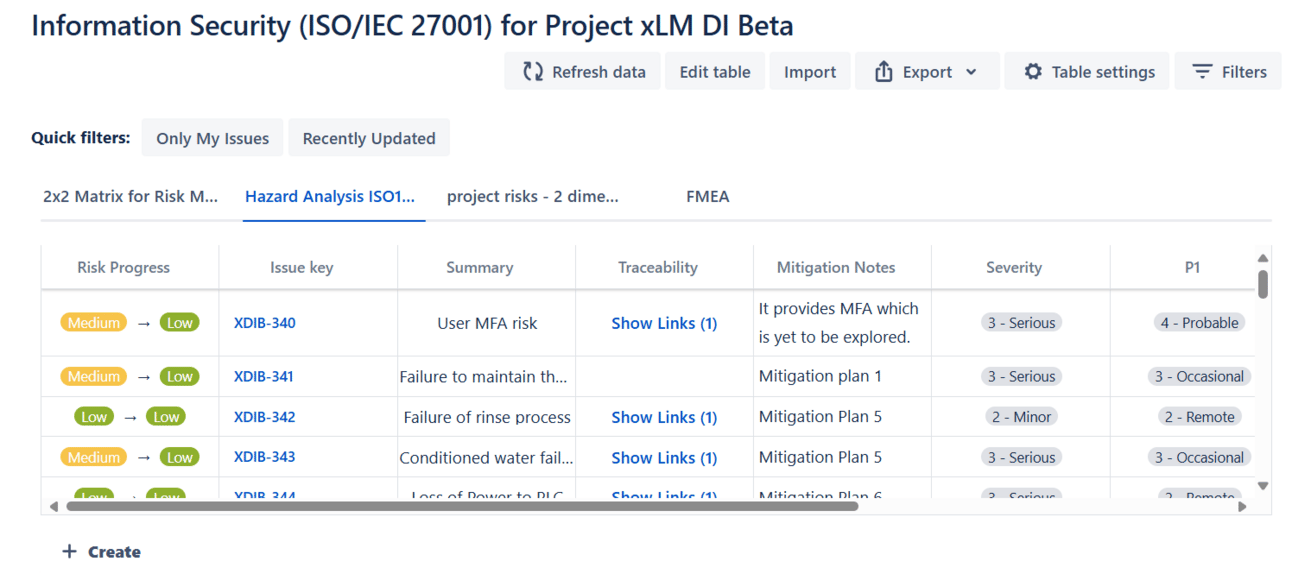
Risk Tables
Risk Report
The Risk Matrix Macro showcases both Initial and Residual Risks in a convenient matrix format. One can have the flexibility to adjust parameters to customize how risks are displayed. The Risk Table Macro presents the Risks in a structured table/spreadsheet view, complete with links between risks, mitigation actions, and verification tasks. Additionally, one can incorporate a historical graph of individual risks. By modifying macro parameters, one can tailor the Risk History report to your specifications, including adding dates as vertical lines.
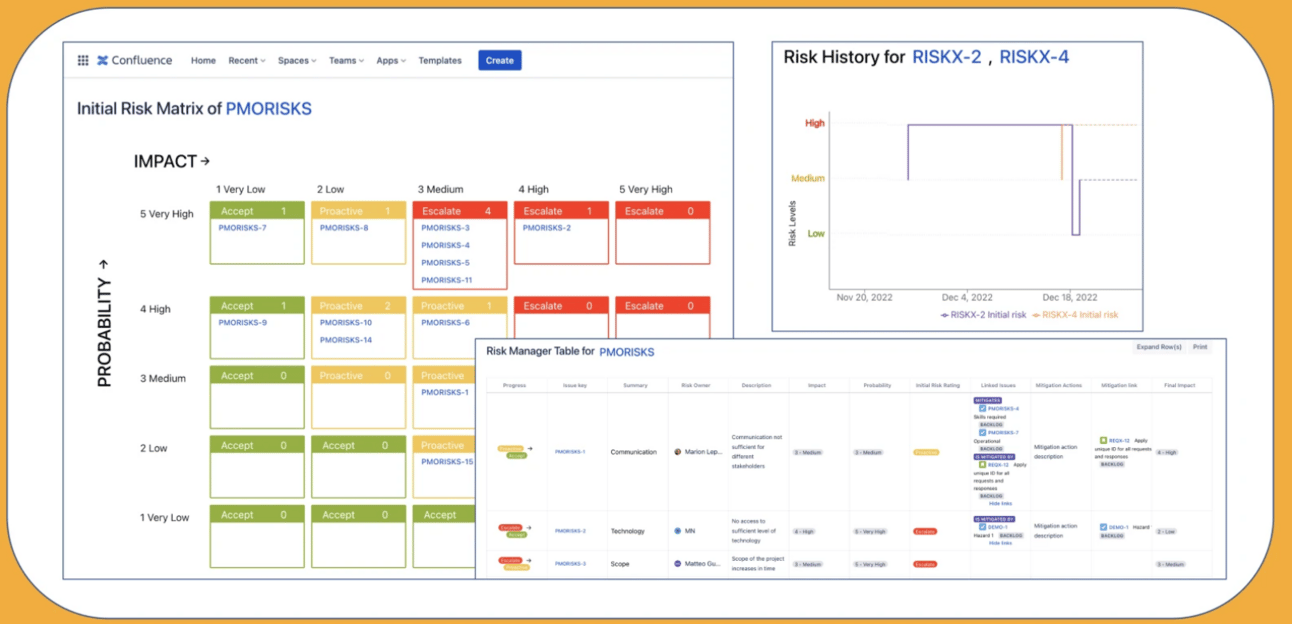
Risk Report
Sample Risk Assessment using ContinuousRM
Methods for Risk Assessments
There are many different methods for Risk Assessment. Some of the most common ones are:
FMEA (Failure Modes and Effect Analysis)
Hazard Analysis
Information Security
Customizing the Risk Tables
ContinuousRM offers customizable Risk Tables, providing users with the ability to create multiple sheets within a single template, or across multiple templates, tailored to their specific project needs.
Users can seamlessly create or modify existing templates to align with their preferences and requirements. Each sheet allows for the addition of multiple columns, which can be mapped to project fields for comprehensive data organization.
Following modification, users can assign Risk Models to the sheet or integrate JQL filters to streamline model selection. Furthermore, Risk Table templates can be assigned to one or more projects, ensuring consistency and efficiency across the organization. Explore below for a glimpse of the sophisticated customization options available within the Customizable Risk Table Template.

Risk Table Templates based on the Risk Types

Creating a Customizable Sheet

Assigning Project to a Risk Table
Customizing the Risk Matrix/Models
ContinuousRM introduces default Risk Models categorized by Risk Type, facilitating comprehensive risk assessment within projects. Users benefit from the flexibility of employing multiple risk assessment models per project, enabling diverse approaches to evaluating individual risks.
Each risk can undergo assessment through various models, accommodating up to 10 iterations per model. The process begins with modifying Risk Iterations, followed by defining unique characteristics tailored to each Risk Model.
Furthermore, users can establish distinct risk classes and levels, with the option to define level ranges for RPN Scores. Customization extends to the Risk Matrix, where users can seamlessly select and integrate relevant risk classes for precise risk visualization and management. Explore the demonstrations below for a firsthand look at the creation and customization of Risk Models within ContinuousRM.

Add Risk Iterations
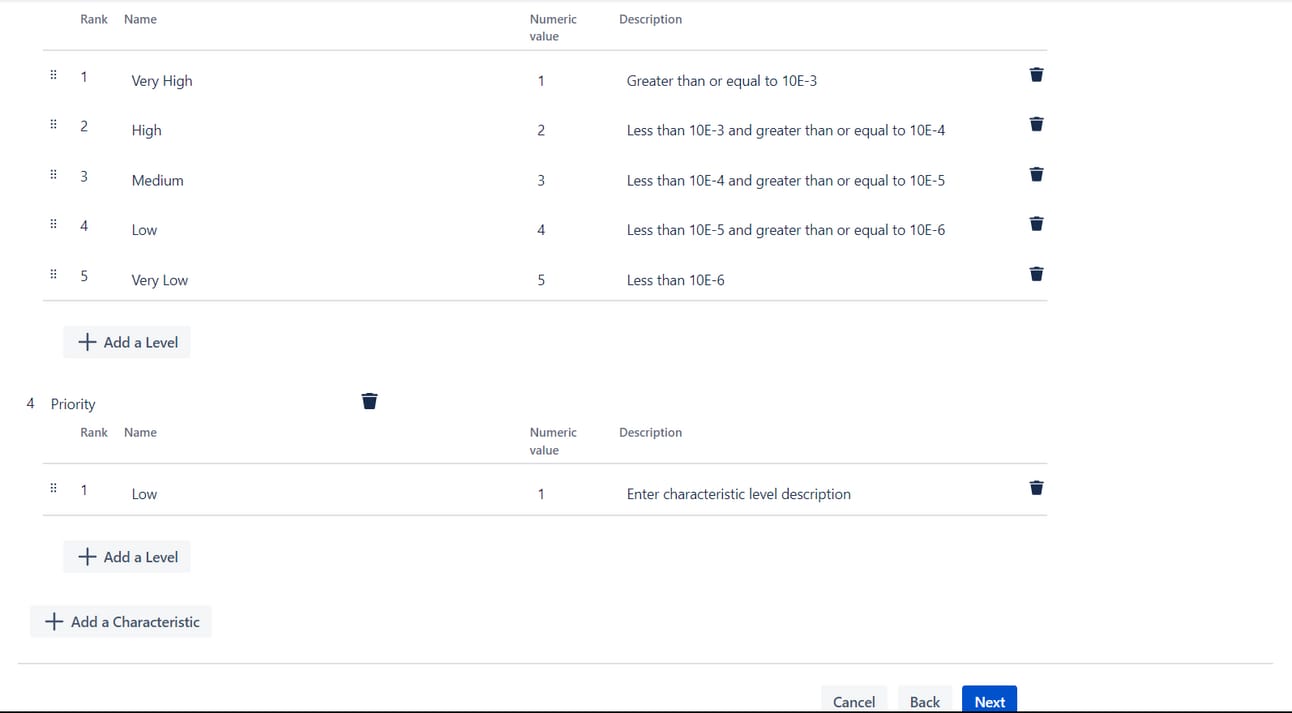
Define the Characteristics
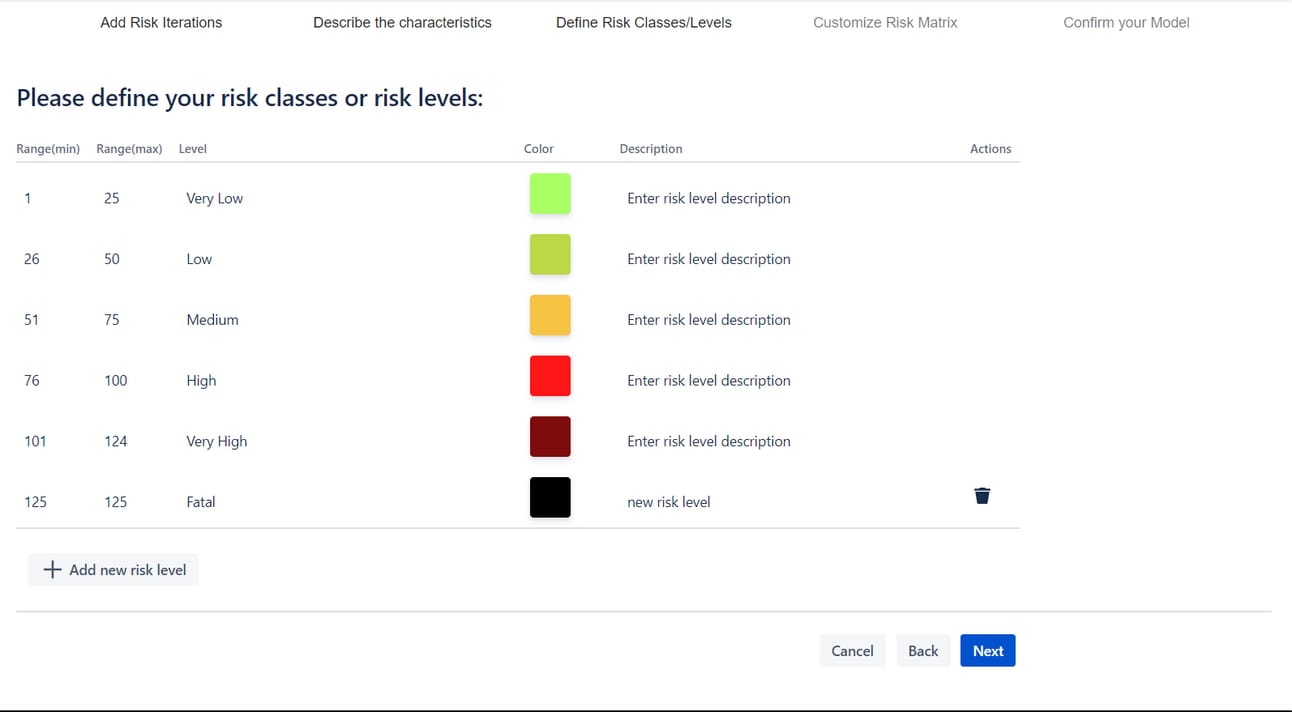
Define Risk Classes/Levels
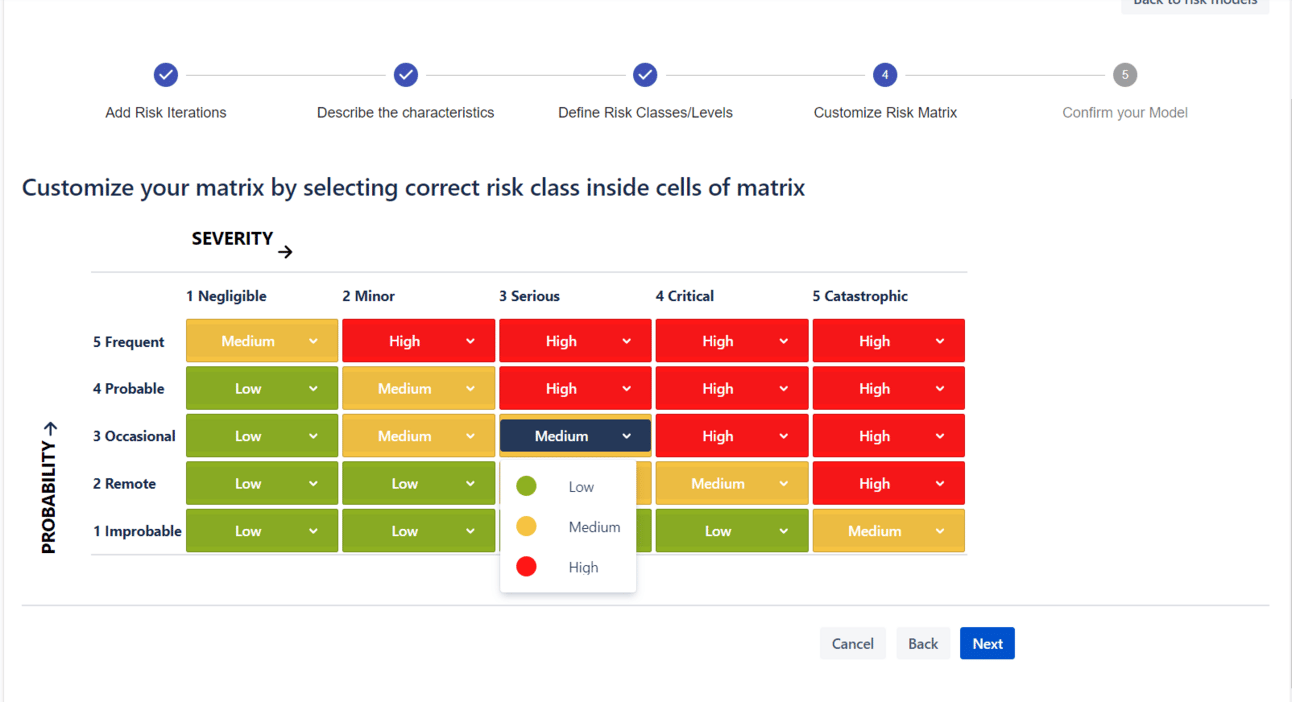
Customize Risk Matrix
Linking Issues when Creating a new risk
ContinuousRM comes with the defined customizable workflow and a set of user groups with special permissions related to the Risk. The following workflow can be used for a Risk:
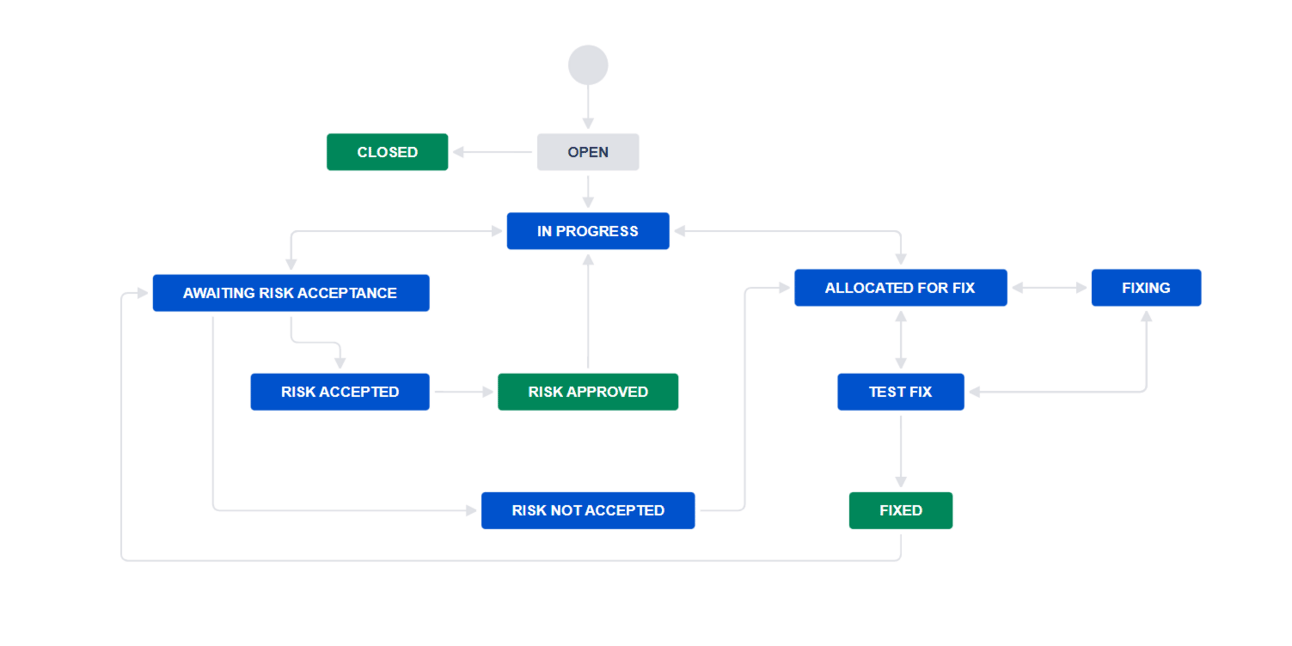
Risk Workflow
Within ContinuousRM, users initiate robust risk management processes by seamlessly creating Risk issues. They input essential values like probability and impact, and can link these issues to related tasks or projects for clarity and actionability.
The system automatically calculates Risk Values based on initial inputs, generating a comprehensive Risk Score. After mitigation, Final Risk values are assigned, prompting a recalculation of Risk Scores for comparison between initial and final RPN scores. This process ensures stakeholders can assess mitigation effectiveness accurately, empowering proactive risk identification, assessment, and mitigation with precision and efficiency.

Creation of Risk

Initial Risk and respective RPN Score
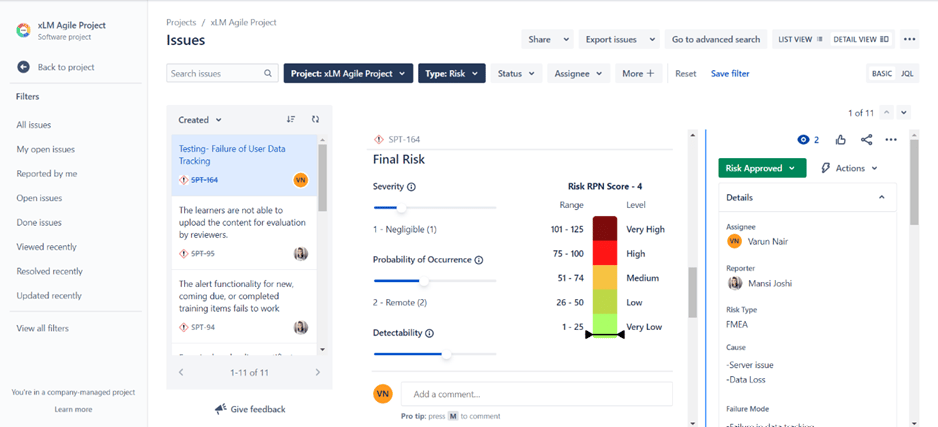
Final Risk and respective RPN Score
Getting the Risk Table View
Within the project interface of ContinuousRM, all risks are conveniently displayed in a table format, facilitating efficient risk monitoring and management. Upon accessing the Risk Table view, users can employ the filters button to apply tailored filters to columns, refining data to obtain desired insights.
Furthermore, clicking on column headers activates the sorting function, typically organizing data alphabetically for enhanced clarity. To optimize user experience, the option to pin columns is available, allowing for personalized customization of the display. This professional interface empowers users to navigate and analyze risk data with precision and ease.
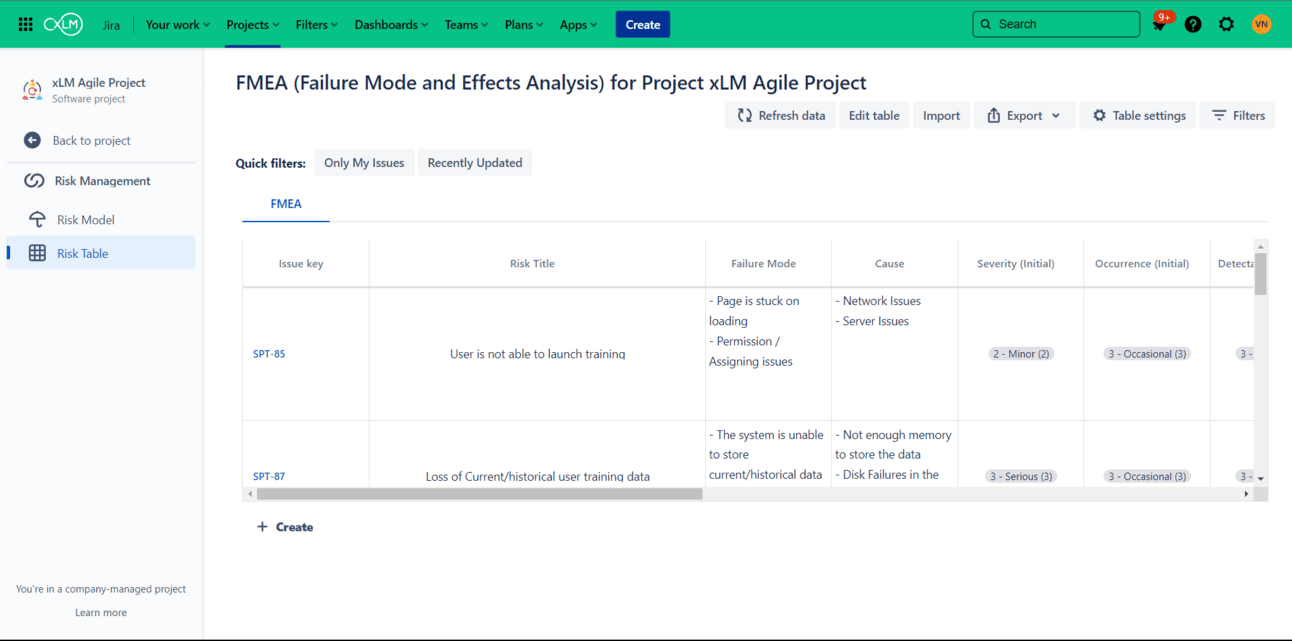
Risk Table View

Filtering Feature in Risk Tables
Advantages of ContinuousRM
ContinuousRM integrates seamlessly, allowing risks to be managed within the same platform where other project activities are tracked. This centralization streamlines workflows and ensures that risk management is part of the broader project management process.
Unlike spreadsheets, which need to be manually updated and shared, ContinuousRM provides real-time updates. All team members can view the latest risk status without delays, reducing the chances of outdated information.
It automates risk tracking and reporting, saving significant time and effort compared to manually updating and consolidating data in spreadsheets.
ContinuousRM allows for detailed permissions and access controls, ensuring that only authorized users can view or edit certain risks, enhancing security and governance.
ContinuousRM offers visual tools such as dashboards and charts to better understand risk data and trends, which can be more insightful than static spreadsheet data.
The app maintains detailed logs of all changes and updates to risks, providing an audit trail that is crucial for accountability and historical analysis.
Unlike spreadsheets that can be easily lost or corrupted, data within ContinuousRM is securely stored and backed up, ensuring long-term availability and integrity.
Conclusion
ContinuousRM is crucial for organizations in today's complex and dynamic landscape. By using tools like Risk Tables in the ContinuousRM application, businesses can identify, assess, and mitigate risks to safeguard their operations and improve decision-making.
Through continuous improvement and adherence to industry standards, organizations can turn risk into opportunity, driving innovation, growth, and sustainable value creation. Using ContinuousRM enhances risk management through improved efficiency, collaboration, real-time updates, comprehensive analysis, better integration, and scalability, providing a significant advantage over manual spreadsheet-based methods.
xLM in the News
Related xLM Managed Services
Latest AI News
What questions do you have about artificial intelligence in Life sciences? No question is too big or too small.
ContinuousRM is built-on Atlassian products and marketplace apps. xLM, LLC incorportes best practices, automation and configuration settings to make it GxP / 21 Part 11 compliant. xLM LLC delivers ContinuousRM as a continuously validated app to its customers.
ContinuousRM FAQs
Question | Answer |
|---|---|
1. What is Continuous Risk Management (ContinuousRM)? | Continuous Risk Management (ContinuousRM) is a comprehensive approach to proactively identifying, assessing, and mitigating risks throughout the entire lifecycle of a project or process. This method goes beyond traditional risk management by emphasizing ongoing monitoring, analysis, and adaptation to changing risk landscapes. |
2. Why is traditional Risk Management failing? | Traditional Risk Management often fails due to: Lack of integration: It's treated as a separate activity rather than an integral part of the project lifecycle. Paper-based exercises: Risk assessments are frequently performed as check-the-box activities with no real impact on decision-making. Inadequate tools: Lack of user-friendly tools makes creating, managing, and tracking risks difficult, hindering effective implementation. |
3. How does ContinuousRM improve risk management in life sciences? | ContinuousRM is critical in the life sciences industry due to stringent regulatory requirements and the impact of risks on patient safety. It helps organizations: Ensure regulatory compliance: By adhering to standards like GMP, GLP, and GCP. Maintain business continuity: Proactive risk mitigation minimizes disruptions to manufacturing and supply chains. Facilitate audits and inspections: Provides a centralized repository for risk-related documents, streamlining audits. Enhance product quality: Identifying and addressing risks throughout the product lifecycle ensures consistent quality and reduces defects and recalls. |
4. What are the key features of ContinuousRM? | ContinuousRM offers features like: Customizable risk tables: Provides a spreadsheet-like view for easy visualization and management of risks. Custom risk models: Allows tailoring risk matrices and scoring mechanisms to specific organizational needs and risk appetites. Risk identification, mitigation, verification, and traceability: Enables a systematic approach to managing risks throughout the project lifecycle. Risk reporting: Generates comprehensive reports with insights into risk assessments, mitigation strategies, and overall risk status. |
5. How does ContinuousRM ensure traceability in risk management? | ContinuousRM integrates risks with mitigation actions, requirements, tests, and other relevant project elements. This interconnectedness ensures complete traceability of: Risk origin and evolution: Understanding how risks emerge and change over time. Mitigation measures: Tracking the actions taken to address identified risks. Verification of mitigation efforts: Confirming the effectiveness of implemented mitigation strategies. |
6. What is the purpose of the Risk Matrix in ContinuousRM? | The Risk Matrix is a visual tool that helps assess and prioritize risks based on their likelihood and potential impact. ContinuousRM enables: Customization of parameters: Define risk levels and scoring mechanisms to align with organizational needs. Automatic risk score calculation: Provides a clear visualization of risk severity and facilitates prioritization. Improved communication and collaboration: Offers an easy-to-understand representation of risks for stakeholders. |
7. How does ContinuousRM facilitate risk reporting? | ContinuousRM offers predefined report templates and customizable options for comprehensive risk reporting: Risk Matrix Macro: Presents initial and residual risks in a matrix format, adjustable to specific preferences. Risk Table Macro: Displays risks in a structured table view, linking risks to mitigation actions and verification tasks. Risk History Report: Provides a historical overview of individual risks with customizable parameters and timelines. |
8. What are the benefits of using ContinuousRM? | ContinuousRM offers several advantages: Proactive risk management: Enables organizations to anticipate and address risks before they escalate. Improved decision-making: Provides data-driven insights for informed decision-making across project phases. Enhanced communication and collaboration: Facilitates a shared understanding of risks among stakeholders. Increased efficiency and compliance: Streamlines risk management processes and ensures adherence to industry standards. |
9. How can I get started with ContinuousRM? | If you're ready to experience a streamlined, efficient, and compliant risk management solution, contact xLM to learn more about ContinuousRM and how it can benefit your organization. |


